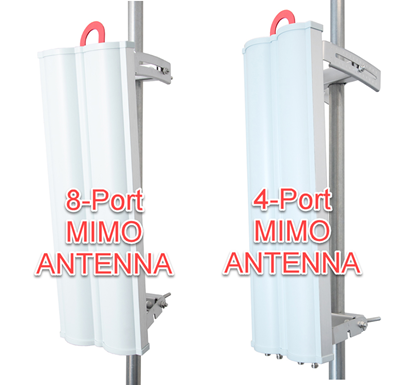Multi-Port Antennas Reduce Deployment Costs

Author: Mike Hoprich, Sales Manager at KP Performance Antennas
Closing the rural broadband gap is now a top area of focus for wireless internet service providers (WISPS) here in the U.S. According to Pew Research, 11 percent of U.S. adults still do not use the internet; and rural Americans are more than twice as likely than urbanites never to use it, putting them at a major disadvantage.
WISPs are now spearheading the rural broadband effort, by building networks in areas commonly overlooked or passed over by major providers. There is still a long road ahead in the struggle to close the gap, but the fact is that it’s shrinking year over year and WISPs are largely to thank for this.
Many WISPs, however, are being held back by the exorbitant costs associated with building and operating cell towers. A new tower, for instance, can run anywhere from $200k to $300k, when factoring in construction, telecommunications equipment and connecting it to the network. There are also significant ongoing maintenance and energy costs to consider, which can drive up the price over the long term.
At the same time, WISPs need to be strategic when deploying cell towers, which are often fought by consumers who are concerned about the health and economic risks that towers pose. Towers are also unsightly, as one Arizona resident recently pointed out regarding a proposed cell site in a residential zone. The idea of merely having to look at a tower is enough to draw ire for homeowners and planning and zoning commissions.
As such, WISPs are strongly encouraged to consolidate antennas wherever possible when densifying networks, to reduce their footprint and control costs. Through consolidation, it’s possible to cut back on tower sprawl without sacrificing performance or reliability across the network.
4x4 and 8x8 multiple input multiple output (MIMO) antennas can save operators money by combining two or four dual-polarized antenna arrays into one radome. This cuts down on physical hardware, leading to more tower space. It also reduces the cost of installation and maintenance. Plus, some access points have the ability to improve signal strength through beam forming, which is possible only with optimized, multi-port, sector antennas.
KP Performance offers seven dual sector antenna models in 2GHz/2GHz, 2GHz/3GHz, 2GHz/5GHz, 3GHz/3GHz, 3GHz/5GHz and 5GHz/5GHz designs.
For more information about these cost-saving antenna solutions from KP, please click here.